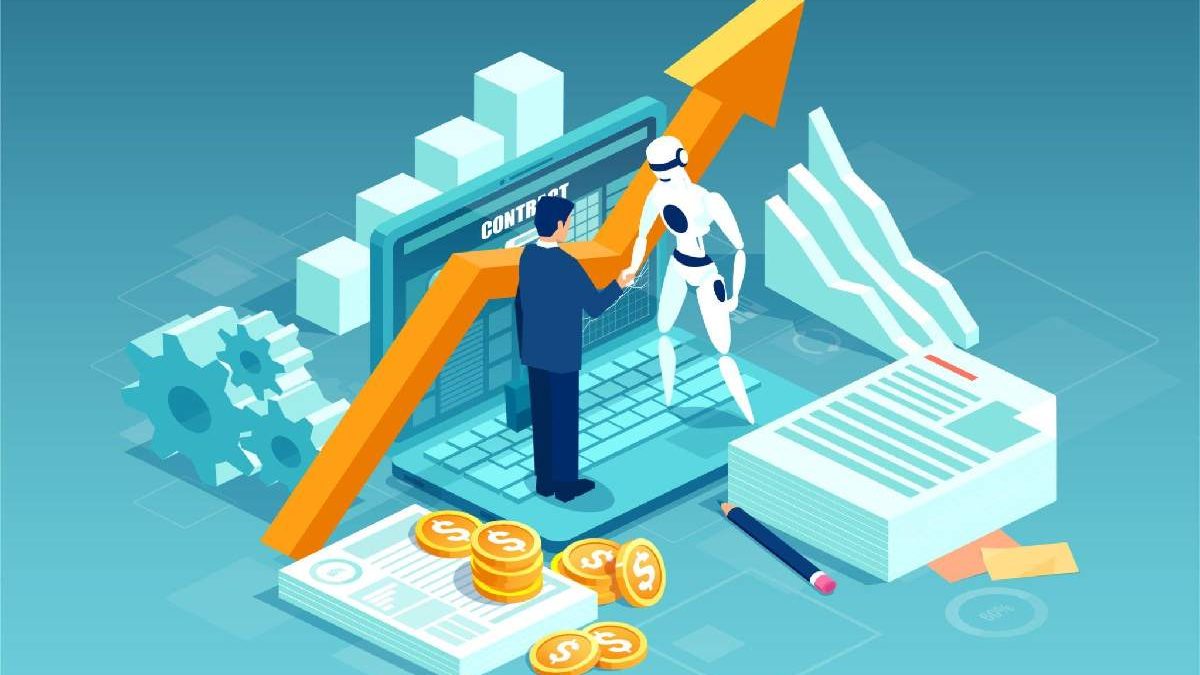In this post, we will cover the main areas where AI can be applied in banking, and also look at the most recent statistics.
Table of Contents
Introduction. What The Numbers Say
AI in banking market size worldwide is expected to hit more than 64 billion USD by 2030, which means the growth of almost 33% from 2021 to 2030.
The recent researches by NBRI show that more than 30% of banks have been already enjoying the advantages of using AI-driven tech since 2020 like voice recognition, predictive analytics, and many more.
Moreover, it has been predicted that the potential cost savings for banks through AI application is estimated to be around 450 billion USD. These opportunities are brought by technology advancement, boosted efficiency and profitability, competition and regulations.
Where To Implement AI Technology?
Process optimisation, credit decisioning, fraud and money laundering, trading and wealth management, marketing and customer service, as well as security and compliance are the main areas for innovations.
Let us look at some AI use cases for each one of them.
- Marketing And Customer Service
Using various AI solutions like transcribe, sentiment analysis, keyword matching, event extractions, etc. We can answer questions such as “What can I do to keep my customers happy?” or “What do people say about my company and my services?”, “Who is interested in my product?” and “How are my competitors going on?”.
-
Process Optimisation
This one aims at lowering operational costs as much as possible and driving profitability. It involves both front-end and back-end activities such as CLAIMS processing. We can use AI’s natural language processing to analyze large volumes of data about policyholders, their lifestyles and habits, etc., to offer more customized products in real-time. In the case of MORTGAGE processing, AI-driven solutions make it possible to read and understand documents automatically. That involves loan or mortgage processing. In CUSTOMER SERVICE, custom-built intelligent chatbots can automatically streamline tedious customer service processes. Right away and with no effort to solve simple customer requests, prioritize other tickets instead based on sentiments for routing to the right team. OPERATIONAL cost reduction AI algorithms handle large quantities of data, thus increasing the efficiency, accuracy, and speed of mathematical calculations resulting in reduced operating costs.
-
Creditationing
In CREDIT SCORING through AI banks can capture data by analyzing mobile phone activities, social media usage, etc. to capture a more accurate assessment of creditworthiness. This will result in faster and cheaper credit scoring and ultimately make the quality loan assessment accessible to a large number of people. Talking about CREDIT RISK, AI can be used to analyze amounts of financial and non-financial data using trained machine learning (ML) algorithms to predict credit default with greater accuracy than the traditional methods allow.
-
Fraud And Money Laundering
Machine learning algorithms are capable of analyzing thousands of data points in real time and flag any suspicious or FRAUDULENT transactions. Thus stopping many fraudulent clients in the process. AI can be used to detect anomalies in spending behaviors, thus preventing thefts. Machine learning driven fraud analytics can process customer account transactional. And even geospatial data to spot patterns that seem unrelated and simply go unnoticed by human data analytics. AI also has the potential to uncover MONEY LAUNDERING activities by analyzing the wire transfer. The details about the money being moved, the source, destination, and the nature of the wire transfer along with the relationship of the sender to the bank.
-
Trading And Wealth Management
Banks are increasingly using ML algorithms to devise new trading and investment strategies. Harnessing the predictive power of data helps funds to spot new trends and potentially profitable TRADES that are outside of the human scope of understanding. It also helps to spot new signals of price movements to make more rapid trading decisions. ROBO ADVISORS are AI-power tools that can help traders streamline. The account opening process and advise them on scaling their portfolio. This could include developing a financial plan, advising on planned home purchases, retirement, protection needs, estate planning, etc. AI can be use to OPTIMIZE TRADES according to prices and from which channel to process the payment more quickly. Artificial intelligencies systems provide a faster analysis of structured and unstructured stock market data. Which can lead to quick decision-making.
-
Security And Compliance
AI can help to find breaches in the SECURITY such as analyzing documentation for account registration. Detect issues within accounts and more. AI-based solutions can also scale and analyze millions of lines in REGULATORY content. Including legal documents, commentary, guidance, legal cases to spot applicable requirements much faster and to enable compliance.
Bottom Line
Artificial Intelligence is not the future of banking, it is its present. As more and more data becomes available, new technologies like quantum edge.
And cloud computing will continue to transform the market. The success requires a holistic transformation spanning multiple layers of the organization and need to pull together people, processes and data and have them all work collaboratively. For banks ensuring adoption of AI technologies across the enterprise is no longer a choice but a strategic imperative, so do consider AI in banks innovations for your business.
We hope we were useful. Thanks for reading.

